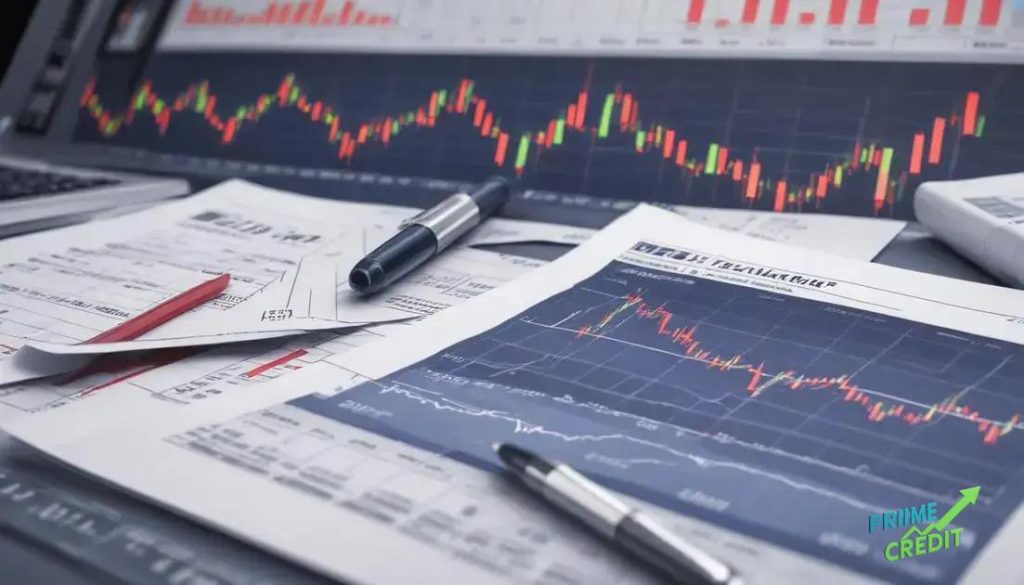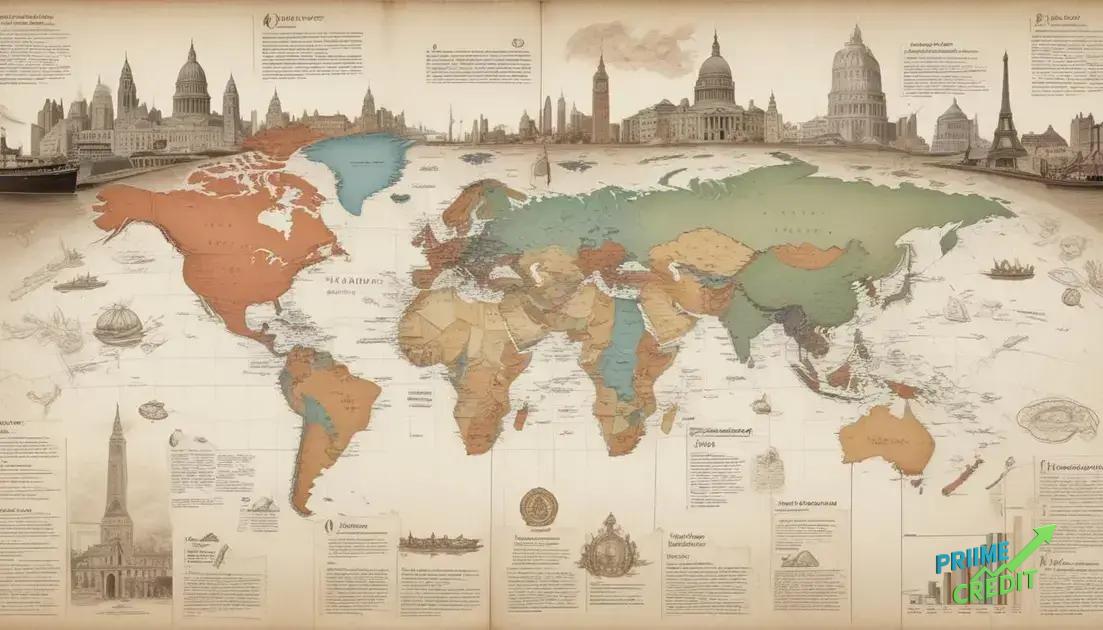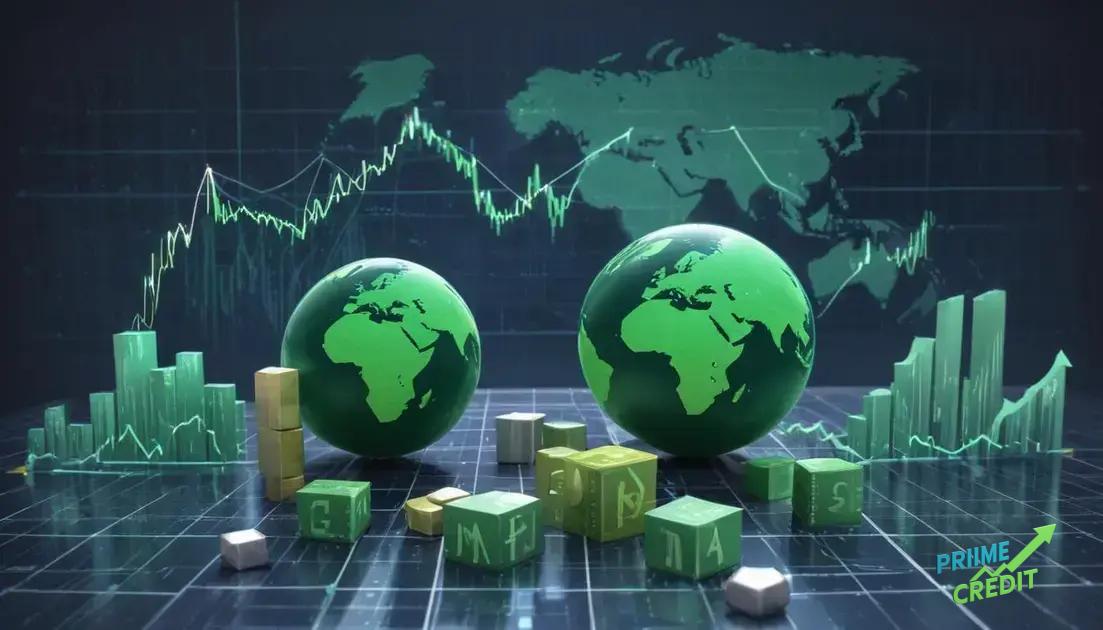Stock market volatility linked to trade policies: what’s at stake?

Stock market volatility linked to trade policies significantly influences investor confidence, as changes in trade regulations can lead to fluctuations in stock prices and overall market stability.
Stock market volatility linked to trade policies can feel overwhelming, especially in today’s ever-changing financial landscape. Have you noticed how decisions made in one country can ripple through global markets? Let’s dive into what’s really happening and what it means for you.
Understanding stock market volatility
Understanding stock market volatility is essential for any investor. It can cause anxiety, but knowing its factors can help you make better decisions. Volatility refers to the fluctuation in stock prices over time. During turbulent periods, prices can shift dramatically, impacting investor confidence and market stability.
What Causes Stock Market Volatility?
Several factors contribute to this phenomenon. Economic indicators, corporate earnings, and global events all play a role. For instance, when economic reports are released, they can significantly influence market reactions.
- Interest rates can affect borrowing costs.
- Political instability can lead to market uncertainty.
- Global crises, such as pandemics, can trigger sudden market changes.
- Investor sentiment can exacerbate these fluctuations.
In addition to external factors, internal market dynamics, like trading volume and market speculation, also contribute to volatility. High trading volumes often signal strong investor interest, which can lead to larger price swings.
Measuring Volatility
Investors often track volatility indices, such as the VIX. This index measures expected market volatility, helping investors gauge potential risks. Another common method is to look at the standard deviation of stock returns, which indicates how much prices deviate from their average.
Monitoring volatility is not just for traders. Long-term investors should also be aware of how volatility can impact their portfolios. A well-diversified investment strategy can help mitigate the risks associated with sudden market shifts.
Impact on Investment Strategies
Understanding volatility can help refine your investment strategies. In volatile markets, some investors may choose to adopt a more aggressive approach to capitalize on price swings. Others might prefer a conservative strategy, focusing on stable stocks.
- Investing in defensive stocks can provide stability.
- Hedging positions through options may reduce risks.
- Maintaining a diverse portfolio can buffer against losses.
Ultimately, being aware of stock market volatility and its causes can empower you to make informed decisions. As an investor, embracing this knowledge can help you navigate challenges more effectively and seize opportunities as they arise.
The impact of trade policies on markets
The impact of trade policies on markets is significant and far-reaching. Changes in trade regulations can influence everything from stock prices to consumer behavior. When a government imposes tariffs or eases trade restrictions, it creates a ripple effect throughout the economy.
How Trade Policies Affect Stock Prices
Trade policies can cause immediate reactions in the stock market. For instance, an announcement about increased tariffs might lead to a decline in stock prices for companies affected by higher import costs. Conversely, trade agreements that promote free trade can lead to bullish movements in the market.
- Industries that rely on imports may face higher costs with new tariffs.
- Exporters can benefit from reduced trade barriers, boosting their performance.
- Investor confidence is often swayed by news related to trade negotiations.
Even speculation around trade policy can lead to fluctuations in stock prices. Investors often react strongly to rumors of changing trade policies, making it important to stay informed on political developments.
Global Market Reactions
The interconnectedness of the global economy means that trade policies in one country can impact markets worldwide. For example, if a major economy imposes strict trade barriers, other nations may respond with similar measures, resulting in an international trade war.
This scenario can lead to uncertainty among investors, triggering market volatility. Companies with global operations must navigate these complexities, adjusting their strategies based on the trade environment.
Consumer Impact
Trade policies don’t just affect businesses; they also influence consumers. Tariffs on imported goods can lead to higher prices for everyday items. For instance, if tariffs are placed on electronics from a specific country, prices in stores might rise, impacting household budgets.
- Consumers may have fewer choices if foreign products are limited.
- Increased costs can alter spending habits among consumers.
- Local businesses might benefit from reduced competition.
Understanding the impact of trade policies is crucial for both investors and consumers. Awareness allows individuals to adapt their financial strategies and make informed choices regarding purchases.
Historic examples of trade policy changes

Historic examples of trade policy changes offer valuable insights into how adjustments in these policies can shape economies. Understanding past events helps us predict potential future outcomes and market behaviors.
The Smoot-Hawley Tariff Act
One of the most infamous examples is the Smoot-Hawley Tariff Act of 1930. This act raised tariffs on over 20,000 imported goods. While it aimed to protect American industries, it led to retaliatory tariffs from other nations and worsened the Great Depression. The act can serve as a warning of how protectionist measures can backfire.
- It restricted international trade, leading to a sharp decline in exports.
- Many countries raised their tariffs in response, creating a global trade war.
- Economic recovery slowed as global commerce diminished.
The aftermath of the Smoot-Hawley Act highlights how aggressive trade policies can result in negative repercussions both nationally and globally.
NAFTA and Its Impact
Another significant event is the introduction of the North American Free Trade Agreement (NAFTA) in 1994. This agreement between the United States, Canada, and Mexico aimed to eliminate trade barriers and increase economic cooperation. NAFTA successfully increased trade among the three nations, boosting economies.
However, it also faced criticism for leading to job losses in some sectors, particularly manufacturing. Understanding both sides of NAFTA’s impact is crucial in evaluating the benefits and challenges of trade agreements.
Brexit and Trade Relations
More recently, the decision of the United Kingdom to exit the European Union, known as Brexit, dramatically altered trade policies. Post-Brexit, the UK had to negotiate new trade deals, impacting its relationship with both EU and non-EU countries. Businesses had to adapt quickly to this new trading environment.
- Trade barriers were reintroduced, affecting costs and efficiency.
- New regulations had to be established for goods and services.
- Industries such as fishing and agriculture faced significant changes.
These examples illustrate how changes to trade policies can trigger various reactions in the market. Analyzing history enables investors and policymakers to understand the potential implications of their decisions.
Current trade agreements and their effects
Current trade agreements and their effects play a crucial role in shaping the global economy. These agreements can open new markets and establish rules for international trade. They influence everything from pricing to supply chains and can affect consumers and businesses alike.
Key Trade Agreements
Several major trade agreements are currently in effect. The United States-Mexico-Canada Agreement (USMCA) has replaced NAFTA, aiming to improve trade relations between the three nations. It introduces new regulations on labor, environmental standards, and digital trade.
- USMCA promotes fairer labor practices.
- It supports more stringent environmental protections.
- The agreement opens up new digital trade opportunities.
This agreement exemplifies how changing trade terms can provide fairer conditions for workers while boosting technological advancements in trade.
European Union Trade Deals
Another significant player is the European Union, which has established numerous trade agreements with countries worldwide. These agreements help reduce tariffs and create a more competitive marketplace. They also promote cooperation in regulations and standards, which can simplify trade processes.
An example is the EU-Japan Economic Partnership Agreement, which focuses on eliminating tariffs on goods and enhancing cooperation in various sectors.
Effects on Businesses
Current trade agreements can significantly impact businesses, especially exporters and importers. For instance, lower tariffs often mean reduced costs for companies, allowing them to offer competitive pricing to consumers. Additionally, these agreements can enable businesses to access new markets, enhancing growth opportunities.
- Companies experience cost savings through reduced tariffs.
- New market access can lead to increased sales and profits.
- Fewer trade barriers can streamline logistics and supply chains.
However, companies may also face challenges as they adapt to new compliance requirements imposed by these agreements. Businesses must stay informed on the regulations that affect their operations.
Impact on Consumers
For consumers, current trade agreements can result in lower prices and increased product variety. When tariffs decrease, consumers benefit from more affordable goods. Additionally, agreements can introduce new products to the market, allowing consumers to choose from a wider variety of options.
Understanding these impacts helps consumers make informed purchasing decisions, knowing how trade policies influence prices and availability.
Investment strategies during volatility
Investment strategies during volatility can help investors navigate turbulent markets. When stock prices fluctuate dramatically, having a clear plan in place is essential for stability and growth.
Emphasizing Diversification
Diversification is one of the most effective strategies investors can use during volatile periods. By spreading investments across various asset classes, such as stocks, bonds, and real estate, investors can reduce risk.
- Investing in different sectors helps mitigate losses.
- Global diversification allows exposure to international markets.
- Including various asset types can balance returns.
A well-diversified portfolio can provide a buffer against market swings, ensuring that one poor-performing investment does not heavily impact overall wealth.
Dollar-Cost Averaging
Another strategy is dollar-cost averaging, where investors consistently invest a fixed amount of money at regular intervals. This method allows you to buy more shares when prices are low and fewer when prices are high.
By following this strategy, investors can avoid trying to time the market, which is challenging and often leads to poor decisions.
Risk Management Techniques
Implementing risk management techniques is vital during periods of volatility. Investors should determine their risk tolerance and set stop-loss orders to protect against significant losses. This can help limit losses if the market takes a downturn.
- Setting specific loss thresholds helps prevent emotional decision-making.
- Regularly reviewing and adjusting your portfolio can maintain balance.
- Utilizing hedging instruments, such as options, may protect investments.
Additionally, staying informed about market trends and economic indicators is crucial. Knowledge allows for timely adjustments to your investment strategy, helping to minimize risks associated with sudden market changes.
Staying Focused on Long-Term Goals
Finally, it’s essential to stay focused on long-term investment goals. Volatility can create short-term panic, but keeping long-term objectives in mind can help investors remain calm. Time in the market often outweighs trying to time the market.
By maintaining discipline and not reacting impulsively to market noise, investors can harness the power of compound growth over time. Ultimately, successful investing during volatility requires a combination of strategic planning, patience, and a focus on long-term objectives.
Future trends in trade and market stability

Future trends in trade and market stability are critical for investors and policymakers to understand. As globalization continues to evolve, markets face new challenges and opportunities. Awareness of these trends can help stakeholders adapt and thrive in a dynamic environment.
Emerging Markets Growth
One significant trend is the growth of emerging markets. Countries like India, Brazil, and Vietnam are expanding rapidly. These markets offer vast opportunities for trade as their economies develop and consumer classes grow. Investors are increasingly looking at these regions for potential returns.
- Investments in emerging markets can yield higher returns.
- These markets often have younger populations driving demand.
- Trade agreements may facilitate easier access to these economies.
However, emerging markets can also come with increased risks. Political instability and fluctuating currencies can create unpredictability.
Technological Advances
Technological advancements continue to reshape trade practices. Innovations like blockchain and artificial intelligence are becoming more prevalent in supply chains. These technologies enhance efficiency, reduce costs, and improve transparency.
For example, utilizing blockchain can streamline transactions while ensuring security. As these technologies advance, they are likely to become integral in maintaining market stability.
Stakeholders must remain agile and ready to respond to these changes to mitigate risks and capitalize on new opportunities.
Increased Focus on Sustainability
Sustainability is becoming a pivotal focus in global trade. Companies are increasingly prioritizing sustainable practices in their operations. As consumers demand eco-friendly products, businesses must adapt to these preferences.
Investors are beginning to favor firms that demonstrate social responsibility and environmental stewardship. This trend will likely reshape market strategies, impacting sectors ranging from manufacturing to agriculture.
Understanding Trade Policies and Market Volatility
Trade policies and stock market volatility are closely linked. As we explored, changes in trade regulations can significantly impact market stability. By staying informed about current and past trade agreements, investors can better navigate fluctuations in the stock market.
Investment strategies, such as diversification and dollar-cost averaging, play an essential role during times of volatility. Adapting to new trends, like the rise of emerging markets and technological advancements, can also provide opportunities for growth.
Ultimately, being aware of these dynamics can empower investors to make smarter decisions and build resilient portfolios. Keeping focused on long-term goals while adjusting to current trends ensures a more stable financial future.
FAQ – Frequently Asked Questions about Trade Policies and Market Volatility
How do trade policies affect stock market volatility?
Trade policies can lead to fluctuations in stock prices by influencing investor confidence and altering market conditions. Changes in tariffs and agreements can create uncertainty.
What are some effective investment strategies during volatility?
Effective strategies include diversification, dollar-cost averaging, and risk management techniques like setting stop-loss orders to protect against significant losses.
Why is understanding emerging markets important for investors?
Emerging markets present growth opportunities as their economies develop. Understanding these markets can help investors identify potential high-return investments.
How can technology impact trade and market stability?
Technological advancements, such as automation and blockchain, enhance efficiency in trade, reduce costs, and improve transparency, which can contribute to greater market stability.





